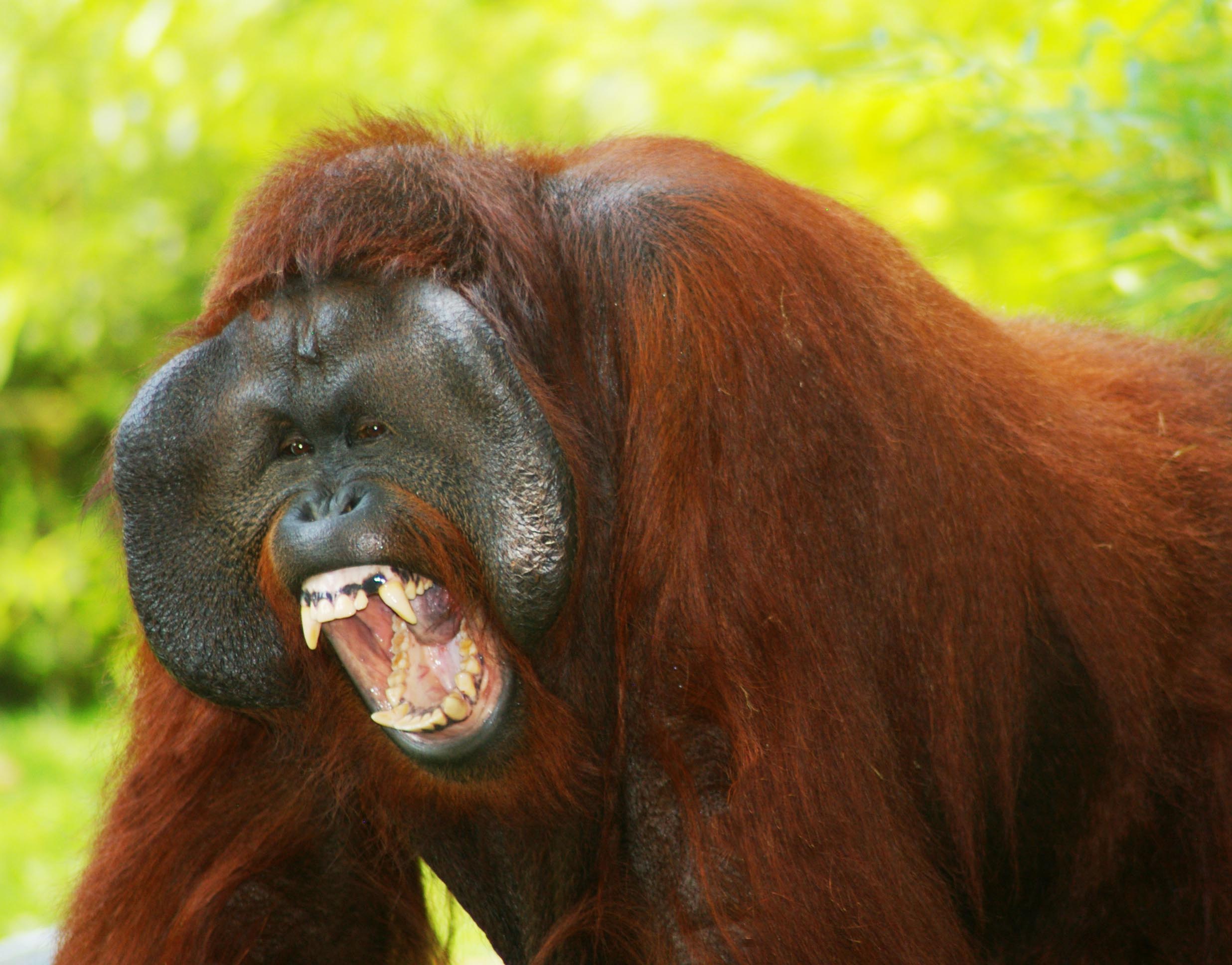Orangutan Facts for Kids
Orangutans are intelligent great apes native to the rainforests of Indonesia and Malaysia, known for their unique personalities and strong conservation needs.
View Article For:

Related Articles
Introduction
They are known for their bright orange hair and long arms, which can reach over 7 feet! They are one of the most intelligent primates, capable of using tools like sticks to get termites from trees. 🛠
️ There are two main types: the Bornean orangutan, found on Borneo Island, and the Sumatran orangutan, which lives on Sumatra Island. 🌍
These amazing creatures are great at climbing and spend most of their time high in the trees!
Fun Facts
2. Orangutans share about 97% of their DNA with humans, making them one of our closest relatives. 🧬
3. They can live up to 50 years in captivity! 🏫
4. Male orangutans can weigh more than female ones, sometimes up to 200 pounds (90 kg)! ⚖
️
5. Orangutans make nests high in trees using leaves and branches every night for sleeping! 🌙
Conservation Status
️ This means they are at a very high risk of extinction! With fewer than 55,000 Bornean orangutans and only about 13,600 Sumatran orangutans left, it's crucial to protect these amazing animals and their habitats. Conservation organizations are working hard to save orangutans and restore their rainforest homes. 🌿
Threats To Survival
Deforestation for palm oil plantations, logging, and mining has destroyed large areas of rainforest. Additionally, illegal hunting and poaching pose threats to their survival. Climate change can also impact their habitat and food sources. 🌀
It's essential for people to spread awareness and support efforts to protect these incredible animals and their homes!
Cultural Significance
They are often seen as symbols of the rainforest and are included in local folklore and art. Orangutans are also important for research, helping scientists understand more about primate behavior and conservation. Education about orangutans helps protect them, as people learn how their actions can positively impact the environment. 🌍
Habitat And Distribution
On Borneo Island, they are found in Sabah, Sarawak, and Kalimantan. In Indonesia, they inhabit the rainforests of Sumatra. These rainforests are important because they provide food, shelter, and places to build nests. 🏡
Sadly, due to deforestation and habitat loss, orangutan populations are declining, making their homes more fragmented and unsafe.
Physical Characteristics
They have long, powerful arms and large hands with long fingers, perfect for gripping branches! Adult male orangutans can weigh up to 200 pounds (90 kg) and stand about 4 to 5 feet tall. 🦧
Their skin is dark, and they have a thick coat of reddish-orange fur, which keeps them warm. Males have cheek pads, which grow as they get older and are a sign of maturity. Their large, expressive eyes help them see well in the dark forest!
Diet And Feeding Behavior
Their favorite foods include durian, mangos, and figs. They also eat leaves, bark, and flowers. Orangutans are very clever and use leaves as tools to help them reach fruit or cover their faces to rain. 🍃
When food is scarce, they can even eat insects and small animals! They spend hours in trees foraging for food and can travel several miles a day looking for tasty treats.
Reproduction And Life Cycle
After a pregnancy lasting about 8.5 months, they give birth to a single baby, which is usually about 3-4 pounds (1.4-1.8 kg) at birth. The baby quickly learns to cling to its mother and starts exploring the trees at about 6 months. Young orangutans grow up slowly, reaching maturity around 7-10 years old. They can live up to 30-40 years in the wild!
Social Structure And Behavior
However, mothers and their babies share a close bond. A mother orangutan will carry her baby for about 2-3 years, teaching them everything they need to know! Young orangutans stay with their mothers until they are around 6-7 years old. While they sometimes interact, adult orangutans usually prefer their own space. They use vocalizations like calls and pant-hoots to communicate with each other across the forest.
Research And Conservation Efforts
The Borneo Orangutan Survival Foundation and the Sumatran Orangutan Conservation Programme are two important groups working on reforestation projects, rescue operations, and education programs. By raising awareness and conducting research, these organizations are helping to ensure a bright future for orangutans and their rainforest homes! 🌱
DIY is a humongous library of
activities and courses for kids.
Curious?
Gallery of
Did you know?
🌴 Orangutans are great apes that live in the tropical rainforests of Indonesia and Malaysia!
🦧 They have long arms that can reach over 7 feet!
🛠️ Orangutans are one of the most intelligent primates and can use tools to find food.
🌍 There are two main types of orangutans: Bornean and Sumatran.
🌲 Their reddish-orange fur keeps them warm while they climb in the trees!
🏡 Orangutans build nests in the trees for sleeping every night!
🍌 They eat over 400 types of fruits, including durians and mangos.
🦧 Adult male orangutans can weigh up to 200 pounds and stand 4 to 5 feet tall.
⚠️ Orangutans are critically endangered due to habitat destruction.
🌿 They can live up to 30-40 years old in the wild!








